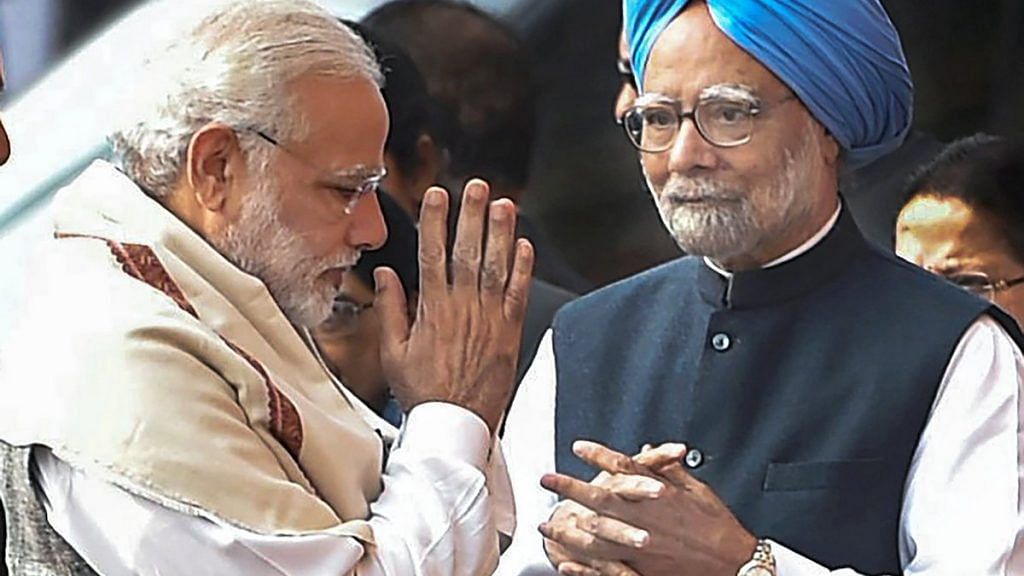New Delhi: The National Sample Survey Office (NSSO) has found loopholes in the Ministry of Corporate Affairs database used to calculate India’s GDP series under the Narendra Modi government, bringing the controversial figures under fresh scrutiny.
In 2015, the Modi government had revised the base year for GDP calculations from 2004-2005 to 2011-12, which led to a significant drop in the growth estimate for the preceding UPA administration: While the old series pegged the growth for 2010-11 at 10.26 per cent, the highest ever achieved by the Indian economy, the revised base year brought it down to 8.5 per cent.
The GDP series is prepared by the Central Statistics Office, the government agency that coordinates all statistical activity.
Where the older GDP series relied on a survey of companies conducted by the Reserve Bank of India (RBI) for the private corporate sector, the newer one employed the ‘MCA-21’ database maintained by the Ministry of Corporate Affairs that contains a list of registered companies.
Question have been raised from the beginning about the use of the untested database without adequate validation, raising concerns over the reliability of this data.
This argument seemed to attain heft Wednesday as business paper Mint claimed that the NSSO had observed in a recent report on service sector enterprises that more than one third of the firms selected in the MCA-21 sample were either non-traceable or wrongly categorised.
The government issued a statement later Wednesday, saying the issue of coverage, quality and timeliness of the MCA database vis-à-vis the Annual Survey of Industries had been discussed in detail in “various meetings of the Advisory Committee on National Accounts Statistics and adopted only thereafter”.
“It is emphasised that there is no impact on the existing GDP/GVA estimates for the corporate sector as due care is taken to appropriately adjust the corporate filings at the aggregate level based on the paid-up capital,” the statement added, looking to assuage concerns about the GDP data.
‘Might explain weird numbers’
Addressing the ensuing controversy, Jawaharlal Nehru University associate professor Himanshu, who only goes by his first name, said the holes in the database were “a big worry”.
“If the entire edifice of GDP growth is dependent on this, then it is a big problem,” he added, saying the GDP series was the only metric that had employed MCA-21 extensively. “It is used not only for the organised sector, but also for arriving at estimates for the unorganised sector.”
The alleged discrepancies, he said, might explain the “weird” GDP numbers devised under the new GDP series. “For instance, the upward revisions in GDP that happened in the year after demonetisation were counter-intuitive,” he added.
The back-series data for the new base year, released by the Modi government after much delay in November last year, drastically revised the growth rates under the Manmohan Singh-led UPA government. It showed that the Indian economy grew at an average of only 6.67% in the nine years ended 31 March 2014.
The back-series data had led many economists to criticise the Modi government — in March this year, 108 economists and social scientists came together to protest against what they said was the Modi government’s propensity to “revise or withhold unfavourable economic data”.
They had cited the GDP back-series data and the yet-to-be-released jobs numbers to state that “…any statistics that cast an iota of doubt on the achievement of the government seem to get revised or suppressed on the basis of some questionable methodology”.
The government’s move to withhold jobs data cleared by the National Statistical Commission, an autonomous body that has the final say on most government statistical data, had seen the agency’s chairman P.C. Mohanan resign. The data suggested joblessness in India was at a four-decade high of 6.1 per cent in 2017-18, though the government had later dismissed the report as a draft.
“MCA-21 was a major modification in the data source made by the new GDP series,” Mohanan told ThePrint.
“Earlier, the sample surveys from RBI were used. Ideally, whenever a new database is used, it has to be critically examined for a period of time before being used. This ensures completeness and accuracy of the database,” he said, “The CSO will have to answer if this kind of critical examination was done or not.”
Also read: Modi Govt sees Rs 1.6 lakh cr tax shortfall, deficit 3.9% of GDP leaving fiscal hole
This report has been updated with the government reaction
